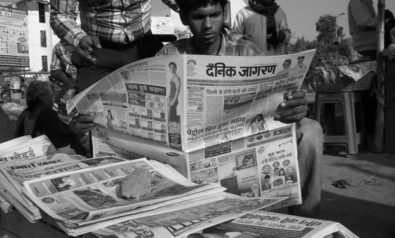South Asia’s native languages are essential for understanding the contemporary region.
Background
Although various studies quantifying South Asian languages differ quite drastically in their findings, it is undeniable that a plethora of languages exist within the region. For example, the chairperson of People’s Linguistic Survey of India (PLSI), G.N. Devy, said: “[Today,] as many as 780 different languages are spoken and 86 different scripts are used in the country [India].”
The problem facing this diversification is that, according to the PLSI study, only “122 [languages] have been declared by the census as spoken by a population exceeding 10,000.”
Devy stated that nearly 250 languages have been lost within the last 50 years in India. This is alarming because language is rooted directly to identity. With the extinction of native dialects, certain cultural aspects are also slowly dying.
In 2010, discourse on the extinction of certain Indian languages arose internationally when Boa Senior, the last speaker of the “Bo” language, passed away.
This phenomenon is not isolated to India. Languages throughout South Asia are becoming endangered. Many are being replaced by Western languages such as English in daily communication, because these languages are commonly used abroad. Some examples include Burushashki from northern Pakistan and Gonduk from Bhutan. These are just a few of the many languages that continue to have a dwindling speaker population.
Why are South Asian Languages Relevant?
South Asia is one of the most linguistically diverse regions in the world. However, some of the more remote languages are fading at what appears to be an exponentially increasing rate. Many rural languages are very old, with linguistic characteristics remaining quite close to that of spoken language when it was first developed.
The use of the English language worldwide is increasing as the processes of globalization and transnationalism continue to expand.
Though at the surface it may appear that English is being welcomed, its increasing presence in India is a somewhat controversial issue. Some claim that English is a necessary tool for one to be competitive on the world stage.
However, there are those who pose the argument that the replacement of native languages with English is causing a change in Indian values and, therefore, Indian culture.
In fact, similar sentiments resonate throughout South Asian discourse on the issue. Language is at the heart of South Asian cultures and it even connects individuals to ethnic identities within the national framework. Each South Asian country differs in its cultural practices, but they all share the commonality of linguistic association to cultural values. It can be argued that linguistic changes are altering the social institutions within the region.
Speaking the languages of South Asia in pure form is somewhat unusual, especially in larger cities, as many native speakers have subconsciously allowed for the hybridization of languages. Pure language is being replaced by linguistic creoles, with intermixing vocabulary and grammatical syntaxes. Regional tongues are often merged with national languages, including English.
In today’s globalized world, the role of English in South Asia is very important with its wide usage within the region. It is often said that an English-speaking individual can visit the big cities in South Asia and not experience a language barrier.
Though English has made it easier for transnational development, the language has affected the evolution of South Asian heritage tongues. The hybridization of languages has often resulted in a completely different sounding language from the original. Consequently, linguistic traditionalists may cease to understand their own language after the integration of English in today’s everyday lexicon.
Image: Copyright © Shutterstock. All Rights Reserved
For more than 10 years, Fair Observer has been free, fair and independent. No billionaire owns us, no advertisers control us. We are a reader-supported nonprofit. Unlike many other publications, we keep our content free for readers regardless of where they live or whether they can afford to pay. We have no paywalls and no ads.
In the post-truth era of fake news, echo chambers and filter bubbles, we publish a plurality of perspectives from around the world. Anyone can publish with us, but everyone goes through a rigorous editorial process. So, you get fact-checked, well-reasoned content instead of noise.
We publish 2,500+ voices from 90+ countries. We also conduct education and training programs on subjects ranging from digital media and journalism to writing and critical thinking. This doesn’t come cheap. Servers, editors, trainers and web developers cost money.
Please consider supporting us on a regular basis as a recurring donor or a sustaining member.
Support Fair Observer
We rely on your support for our independence, diversity and quality.
Will you support FO’s journalism?
We rely on your support for our independence, diversity and quality.





